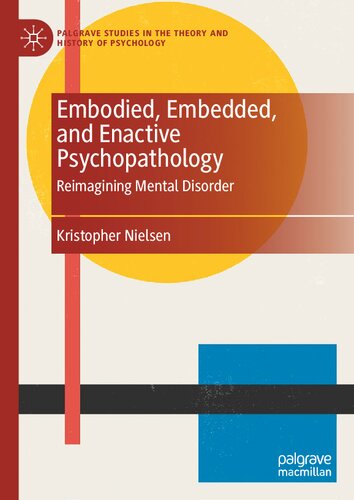

Most ebook files are in PDF format, so you can easily read them using various software such as Foxit Reader or directly on the Google Chrome browser.
Some ebook files are released by publishers in other formats such as .awz, .mobi, .epub, .fb2, etc. You may need to install specific software to read these formats on mobile/PC, such as Calibre.
Please read the tutorial at this link: https://ebookbell.com/faq
We offer FREE conversion to the popular formats you request; however, this may take some time. Therefore, right after payment, please email us, and we will try to provide the service as quickly as possible.
For some exceptional file formats or broken links (if any), please refrain from opening any disputes. Instead, email us first, and we will try to assist within a maximum of 6 hours.
EbookBell Team

0.0
0 reviewsEmbodied, Embedded, and Enactive Psychopathology presents a new way of thinking about mental disorder that is holistic yet critically minded, biologically plausible yet value-inclusive, and scientific yet deeply compassionate. Grounded in an embodied, embedded, and enactive (3e) view of human functioning, this book presents a novel conceptual framework for the study and treatment of mental disorders and explores implications for the tasks of classification, explanation, and treatment. Chapters one to three argue for the central role of conceptualization in the study and treatment of mental disorders. Popular conceptual models are critiqued, including other recent enactive frameworks. Chapters four to seven then present 3e Psychopathology and explore its implications. This includes analysis of both research-based efforts to explain mental disorders, and methods for formulating individual-level explanations in clinical practice. New answers are presented for important questions such as: are mental disorders things we do or get? Are mental disorders defined in nature or are they socially constructed? Are mental disorders the same things across different cultures? And, are mental disorders located in our brains, bodies, or environments? This engaging work offers fresh insights that will appeal to clinicians, researchers, and those with an interest in the philosophy of psychiatry.